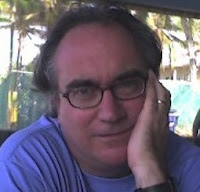I put Marisha Pessl's Special Topics in Calamity Physics in the Stack on the basis of rave reviews, and that it sounded like my kind of thing. And so it is, including literally scores of references to books literary and otherwise. The 36 chapter headings are names of canonical literary works, only one of which is fictitious (The Nocturnal Conspiracy, by Smoke Wyannoch Harvey), while the text is liberally sprinkled, Borges-style, with references to scholarly works (L. L. MacCauley's 750-page Intelligensia [1991]), B-list novels (Circe Kensington, The Crown Jewels of Rochester de Wheeling [1990]), and arcana running to the True Crime genre (Paul D. Russell's terrifying What You Don't Know About White Slavery [1996]), generally fictitious. The novel is crackling with the passion of brilliant young minds infatuated with learning, a celebration of the intoxication of liberal arts education - I loved it.
It also has a large debt to Nabokov, one can think of it as a kind of Lolita written from the point of view of the nymph, although Blue Van Meer the teenage heroine, like the tough guy shamus who never takes money, never has sex with anybody, something that can not be said of a single one of her friends and acquaintances, adult or otherwise. The real theme of Lolita, like all of Nabokov's novels (there are also prominent references to Ada, or Ardor, Nabokov's most ambitious novel, and the supremely disturbing Laughter in the Dark), is callous injustice, as Humbert Humbert steals Lolita's future along with her innocence (I was pleased to find this interpretation also in Azar Nafisi's Reading Lolita in Tehran, another great story about young women empowering themselves through books).
The first fifty pages of Special Topics is the (slightly slow-moving) account of Blue's childhood with her peripatetic, widowed academic father, a scholar of revolution and revolt, who drags her across a Lolitian landscape of malled middle America to an endless series of obscure branch campuses (the University of New Mexico at Okush). If there is a serious side to what is a fun and funny novel, it is the theme of coming to realize that your father isn't Superman, a fact one has to grieve, and that one is going to have to move on to other things and other men. In this case we have a full-blown, grandiose, self-pitying teenage fantasy along those lines, as Dad slowly emerges as an essentially angry character, not what he seems, and even something of a monster, and Blue's transition to college and adulthood is literally his abandonment of her.
Along about the middle of this 514-page novel we also find ourselves in the middle of a fine, page-turning murder mystery, on which frame we are treated to a big helping of idiomatic, post-ironic, slacker teenage culture critique, commuting between CSI:Miami and Moliere, between K-Mart and La Scala.
I have to mention here another novel with uncanny similarities (no, not that uncanny!), and also well worth reading, Donna Tartt's The Secret History (1992). Both novels are written by young Southern women who have gone up North for exceptionally fancy educations, Quentin Compson-style, both are centered on tight-knit groups of highly charismatic and transgressive student friends (Tartt's is the dangerously precocious Ancient Greek class at a Bennington College stand-in), both use the plot devices of murder and suspicion thereof, both are ultimately moralistic Bildungsromans, both are very hip and funny, both are very, very good. I pray for nothing but success for both of these writers in the future (Tartt has written a well-received second novel).
Subscribe to:
Post Comments (Atom)



























No comments:
Post a Comment